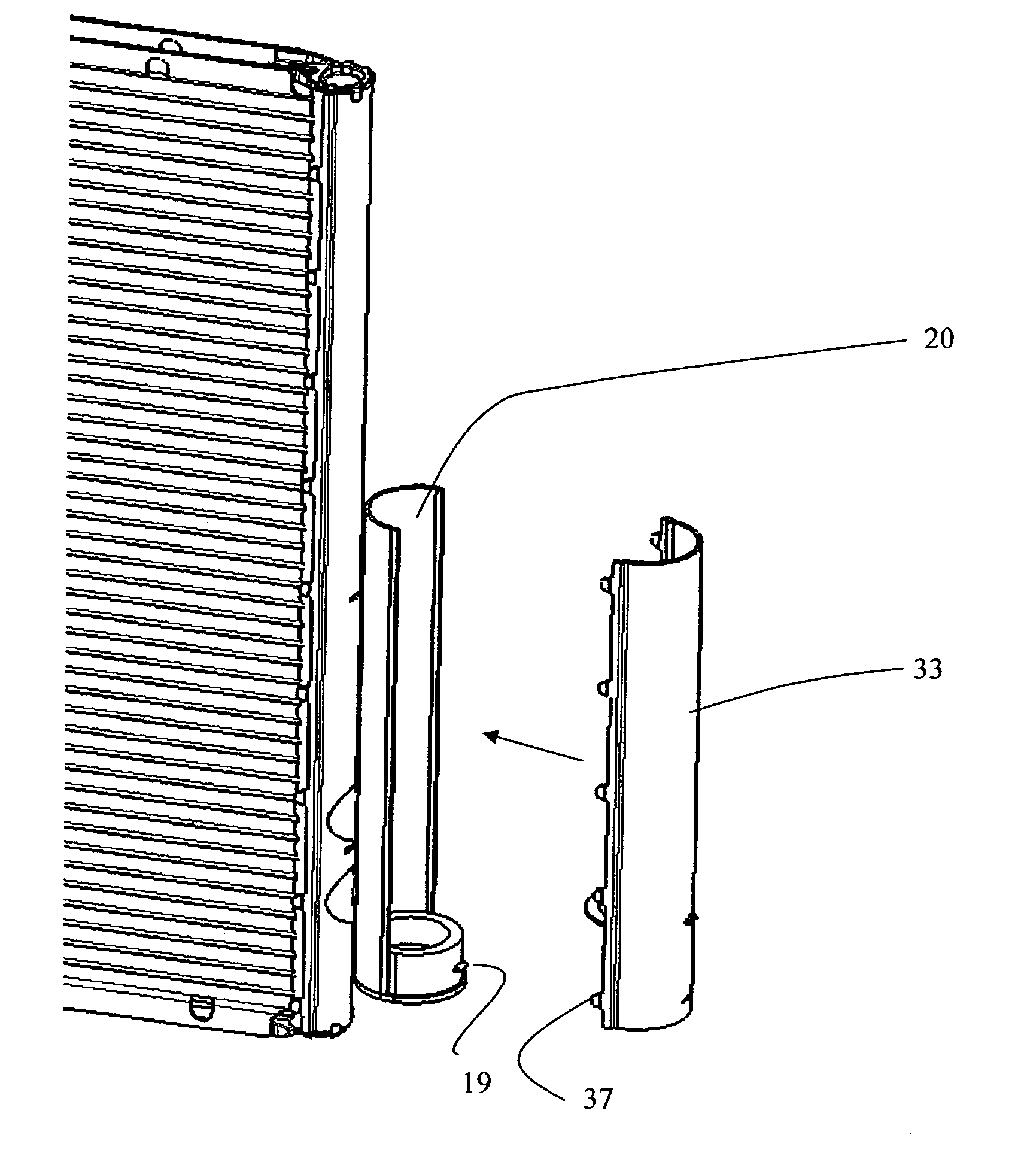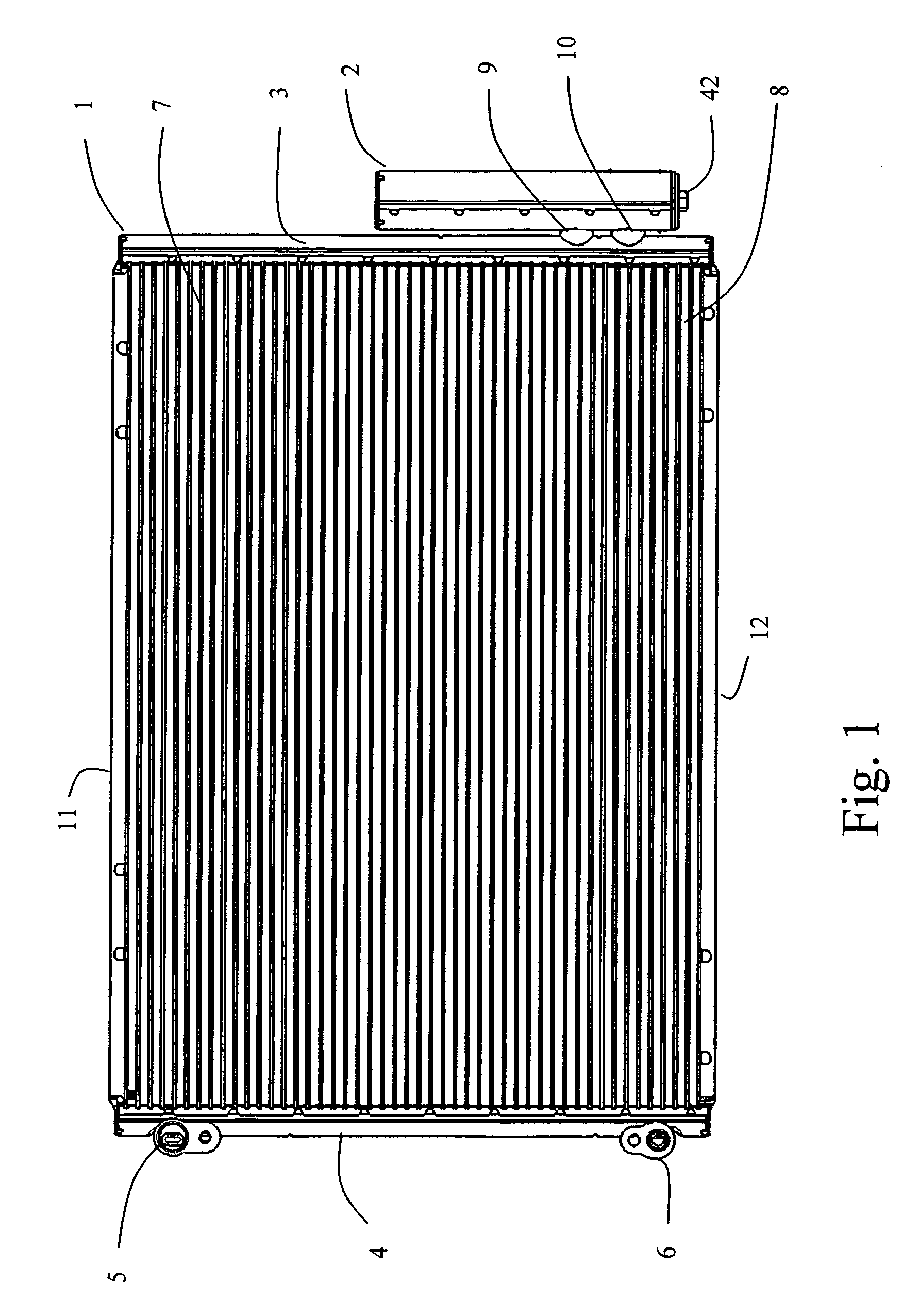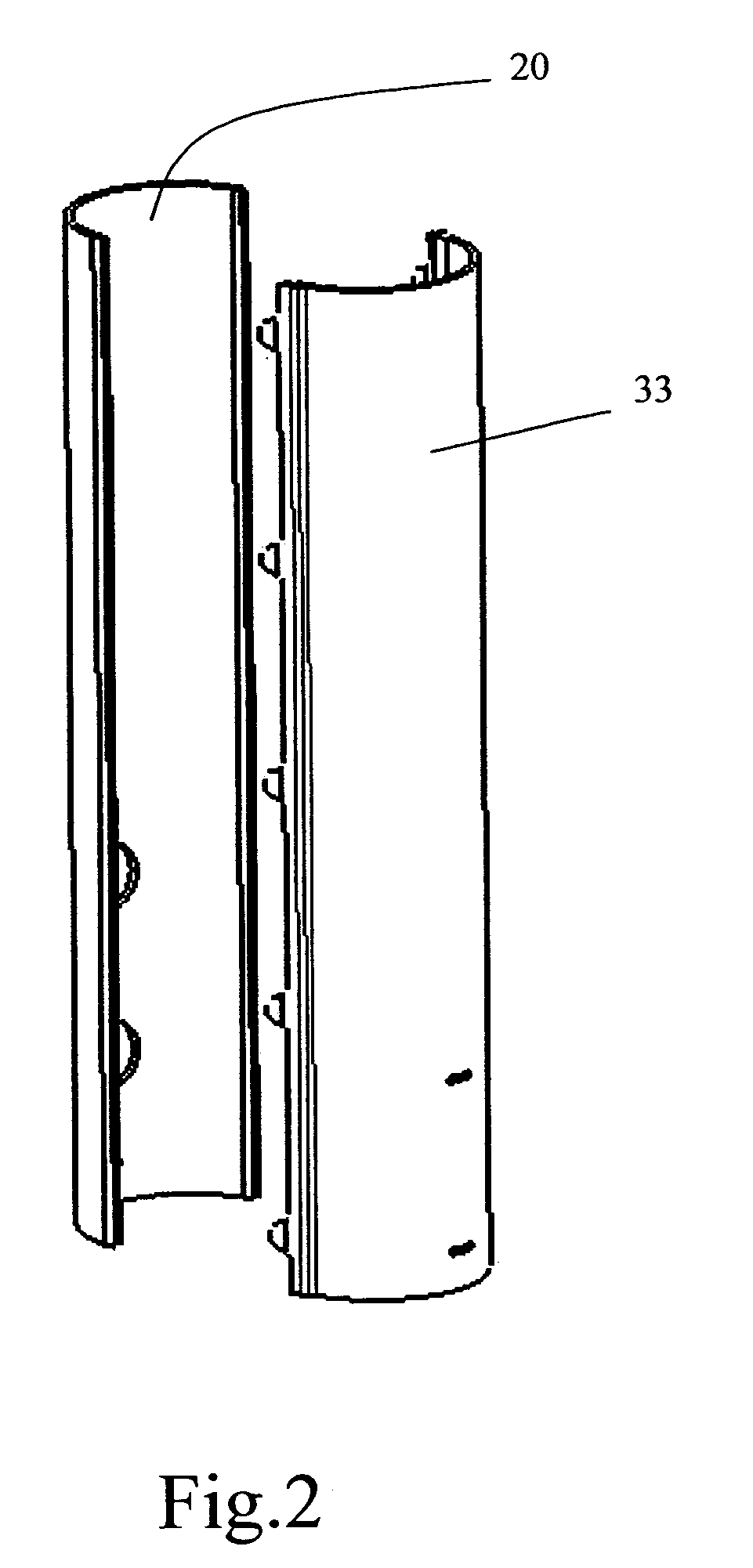Receiver tank for a condensor and method of manufacturing the same
a condenser and receiver tank technology, applied in the field of condensers in air-conditioning systems, can solve the problems of increasing the cost of the vehicle air-conditioner, and the solution offered by these patents also has limitations, so as to reduce the cost of manufacturing, reduce the waste of resources, and avoid the effect of expensive and complicated tooling
- Summary
- Abstract
- Description
- Claims
- Application Information
AI Technical Summary
Benefits of technology
Problems solved by technology
Method used
Image
Examples
Embodiment Construction
[0059] For the purpose of promoting an understanding of the principles of the invention, reference will now be made to the embodiment illustrated in the drawings and specific language will be used to describe the same. It will nevertheless be understood that no limitation of the scope of the invention is thereby intended, such alterations and further modifications in the illustrated device, and such further applications of the principles of the invention as illustrated therein being contemplated as would normally occur to one skilled in the art to which the invention relates.
[0060] Through out the patent specification, a convention employed is that in the appended drawings, like numerals denote like components.
[0061] With reference now to FIG. 1, an integrated condenser (1) with the receiver tank (2) in accordance with the first embodiment of the invention is shown. The condenser has a pair of vertically oriented headers (3,4) horizontally spaced apart from each other. Each header...
PUM
 Login to View More
Login to View More Abstract
Description
Claims
Application Information
 Login to View More
Login to View More - R&D
- Intellectual Property
- Life Sciences
- Materials
- Tech Scout
- Unparalleled Data Quality
- Higher Quality Content
- 60% Fewer Hallucinations
Browse by: Latest US Patents, China's latest patents, Technical Efficacy Thesaurus, Application Domain, Technology Topic, Popular Technical Reports.
© 2025 PatSnap. All rights reserved.Legal|Privacy policy|Modern Slavery Act Transparency Statement|Sitemap|About US| Contact US: help@patsnap.com



